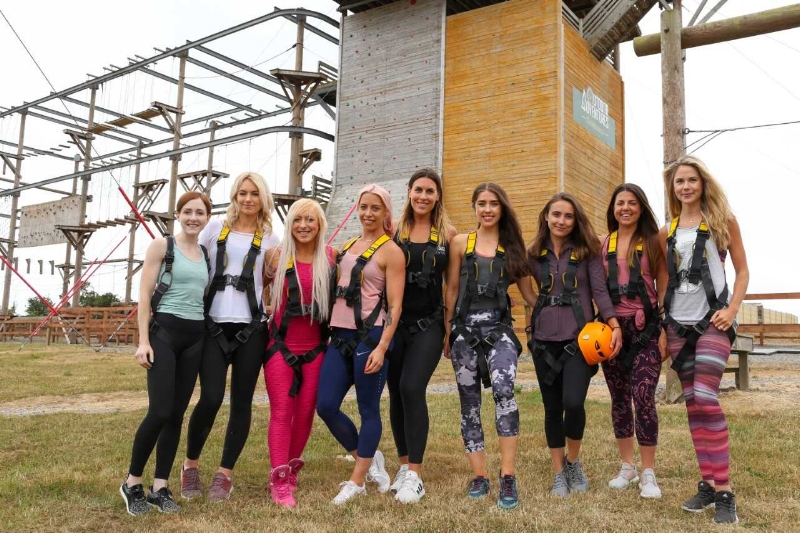By
ISOBEL JONES

Over the last number of years, brand PR in Ireland has changed dramatically. Tactics and strategies that were once our bread and butter are now becoming archaic, while social, digital and influencer marketing have become essential.
Another recently popularised tactic in the brand PR toolkit is experiential marketing. But what exactly is it, where has the trend come from, and what benefit does it have for brand PR and our clients?
The trend
Consumers are increasingly hungry for unusual experiences that take them out of their everyday lives and give them something to talk about.
The experience itself is only half of the attraction. The rise of social media and user-generated content has created a new demand: consumers want to be able to attend new and cool experiences but mainly so they can share them with their online followers. Consumers want to experience something different, and if the attraction has an air of exclusivity attached to it, all the better.
Providing an exciting experience for consumers not only drives physical footfall to an event, but also drives brand engagement online and offline. An increasing number of brands in Ireland are seeing the rewards for this type of activity, including some of our own at PR360.
Our client Qatar Airways recently launched a ‘keepie-uppie’ competition on South William Street in Dublin to highlight their sponsorship of the 2018 World Cup. The activation drew a crowd of men and women of all ages. Each person took on the challenge for the chance to win return flights to Doha.
Another client, Scope Healthcare, launched their Bio-Kult summer campaign at an event at Courtlough Adventure Centre last month. The theme of the summer launch was to ‘feel the fear, do it anyway, and trust your gut’. Attendees were invited to take on the high ropes and to do something outside of their everyday routine. This style of event experience allows attendees to fully immerse themselves in the brand ethos.
The need
Brand PR campaigns can no longer rely solely on a press release and an image to achieve media cut-through. Today, a brand needs to be able to create something tangible and talk-worthy that leaves a lasting impression.
Too often, brands formulate their campaign activity solely around media exposure and forget about consumers in the process.
While media buy-in is of course important, experiential events and stunts help to balance the scales between the two audiences, allowing brands to connect directly with their customers.
The benefit
Opting for a well-thought-out experience for consumers and media, rather than a regular ‘lunch and learn’-style event, will change how people view your brand. You’ll become known as a trend-setter and a thought-leader in your sector, and that means you’re more likely to draw crowds at future events and be of long-term interest to journalists.
Providing consumers with a positive brand experience will help to put your business front and centre of consumers’ minds, leading to increased sales and support for your bottom line.
Experiential events also provide brands with a bank of social and digital content. With the right strategy, this will help you to increase your following and drive online engagement.

What’s next?
The consumer experience is destined for the online and digital worlds. Soon, with technology like virtual reality, we will no longer need to attend events and experiences to meaningfully engage with a brand. VR allows time-poor consumers to experience different worlds in the comfort of their own home and at their own discretion.
Some American brands are already starting to use VR in innovative ways. For instance, IKEA incorporated a VR experience into one of its store openings in America. It immersed visitors in an IKEA world where they could play games, examine furniture, and learn about sustainability and design.
Brands are also starting to use holograms to engage with consumers. We saw this last year when Pepsi and Aquafina launched a baseball activation in Chicago that allowed fans to play against a life-sized holographic baseball player. Fans could then share this experience on their social media channels.
There’s no doubt that VR and holograms will make their way into brand PR in Ireland in the coming years, especially considering that the cost of both are decreasing by the minute. All industries could benefit from them, in particular those that need quick, reactive communications, like aviation.
Knowing this, it’s important for brands and their advisers to stay on top of the trends, and to be able to identify new opportunities to increase consumer engagement, brand loyalty and ultimately, a growth in sales.
ISOBEL JONES
Isobel is a Senior Client Executive at PR360. She manages brand communications campaigns and events—and ensures both always go off without a hitch! She never starts a day without a coffee and a smile.

